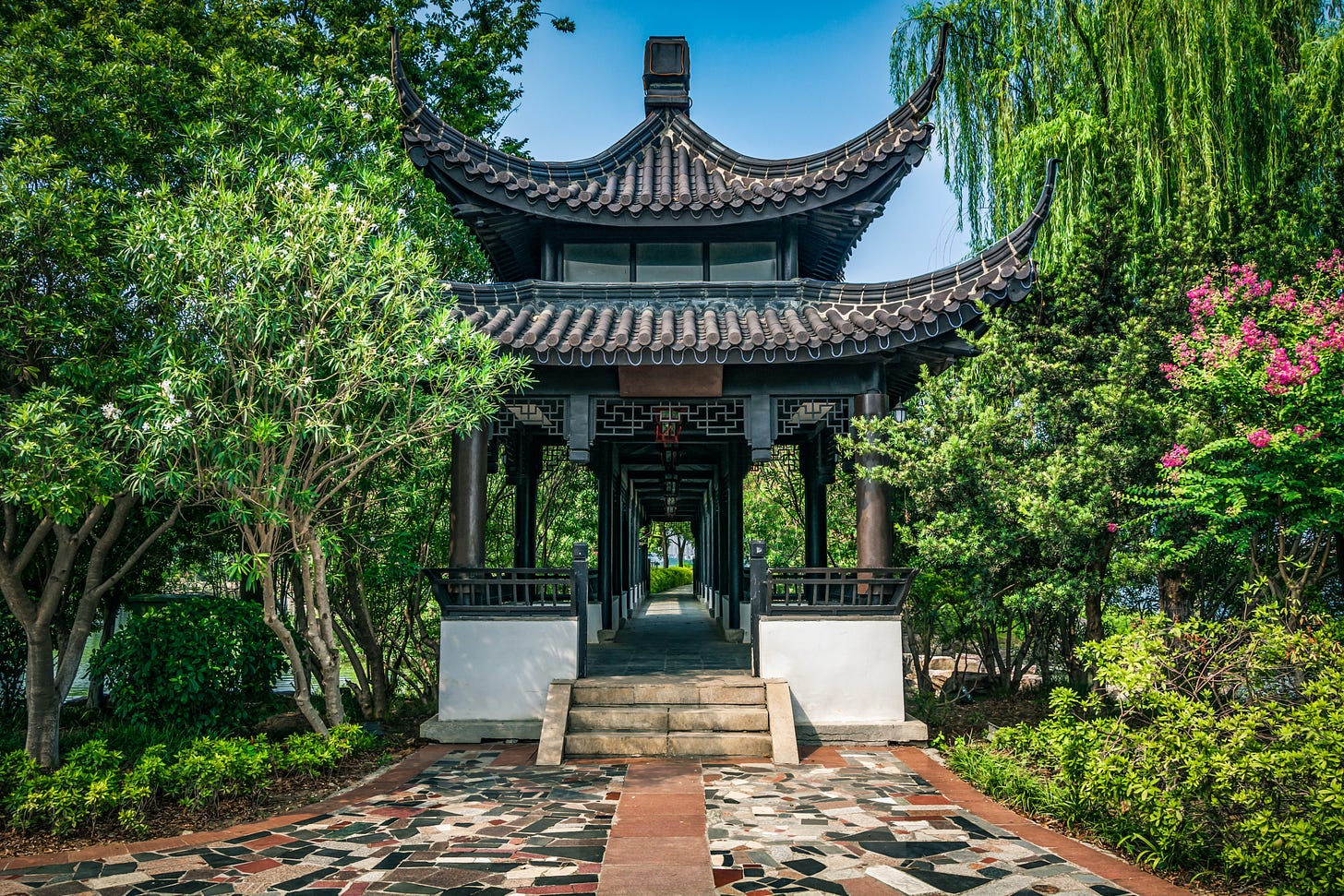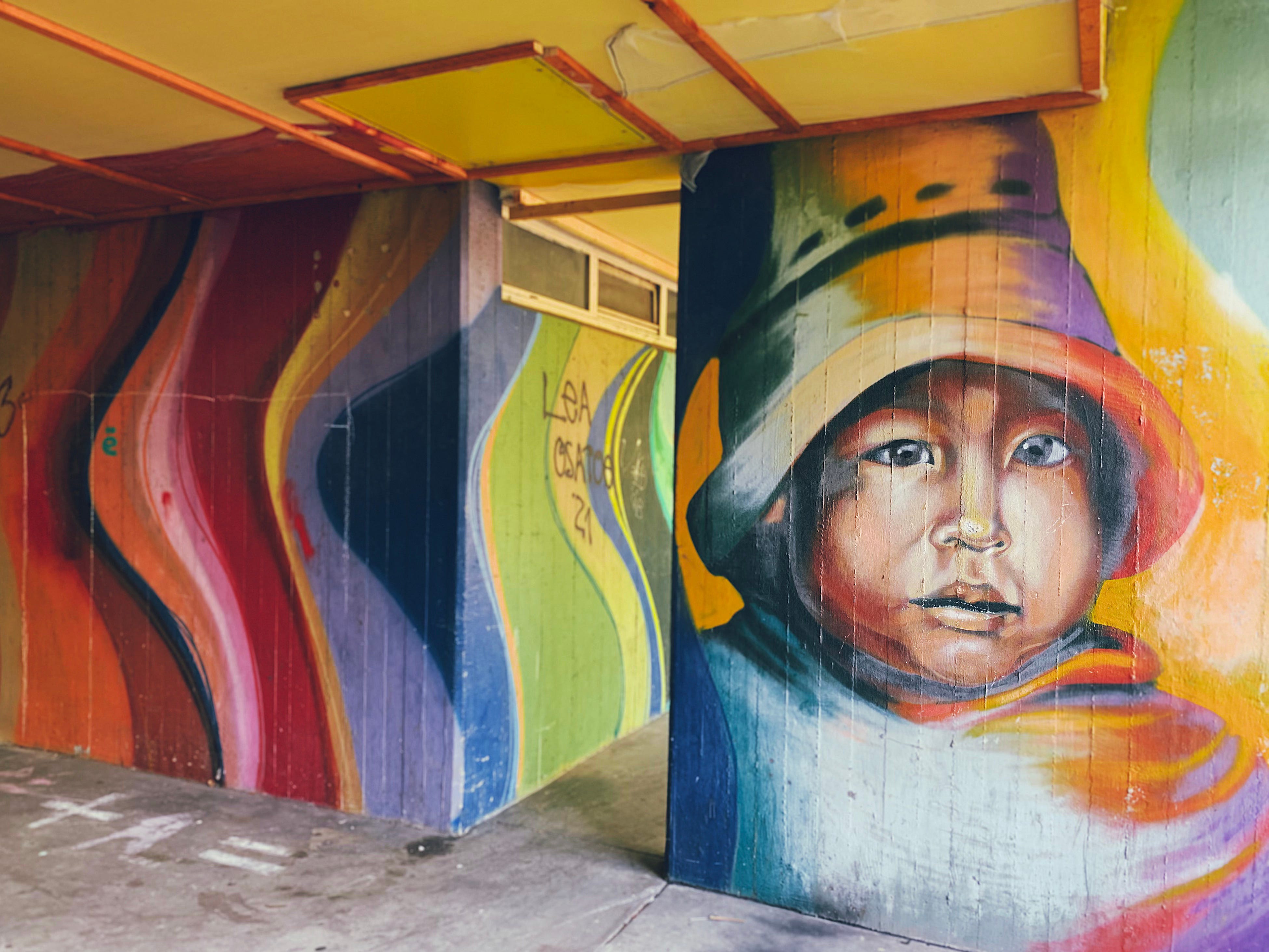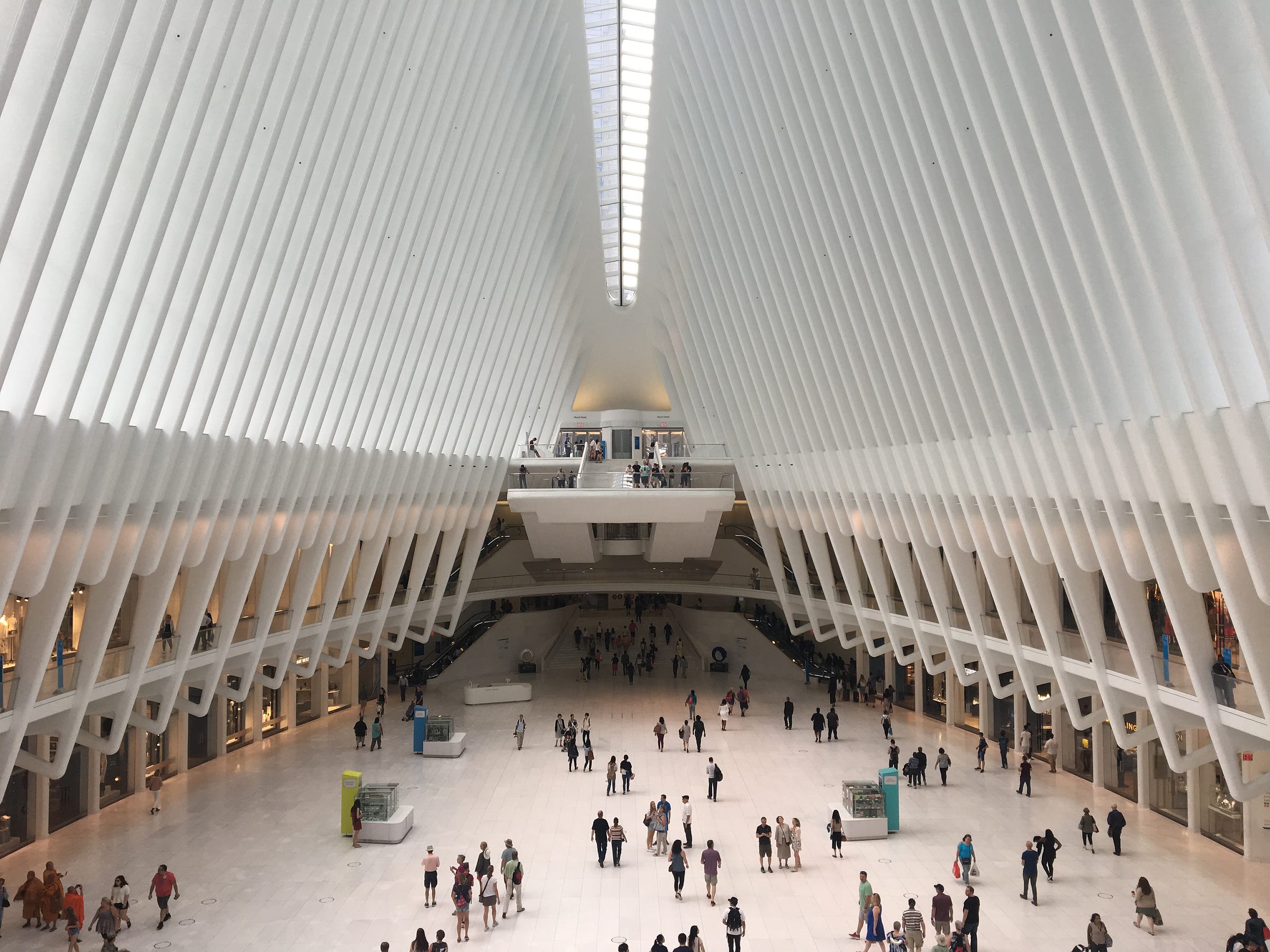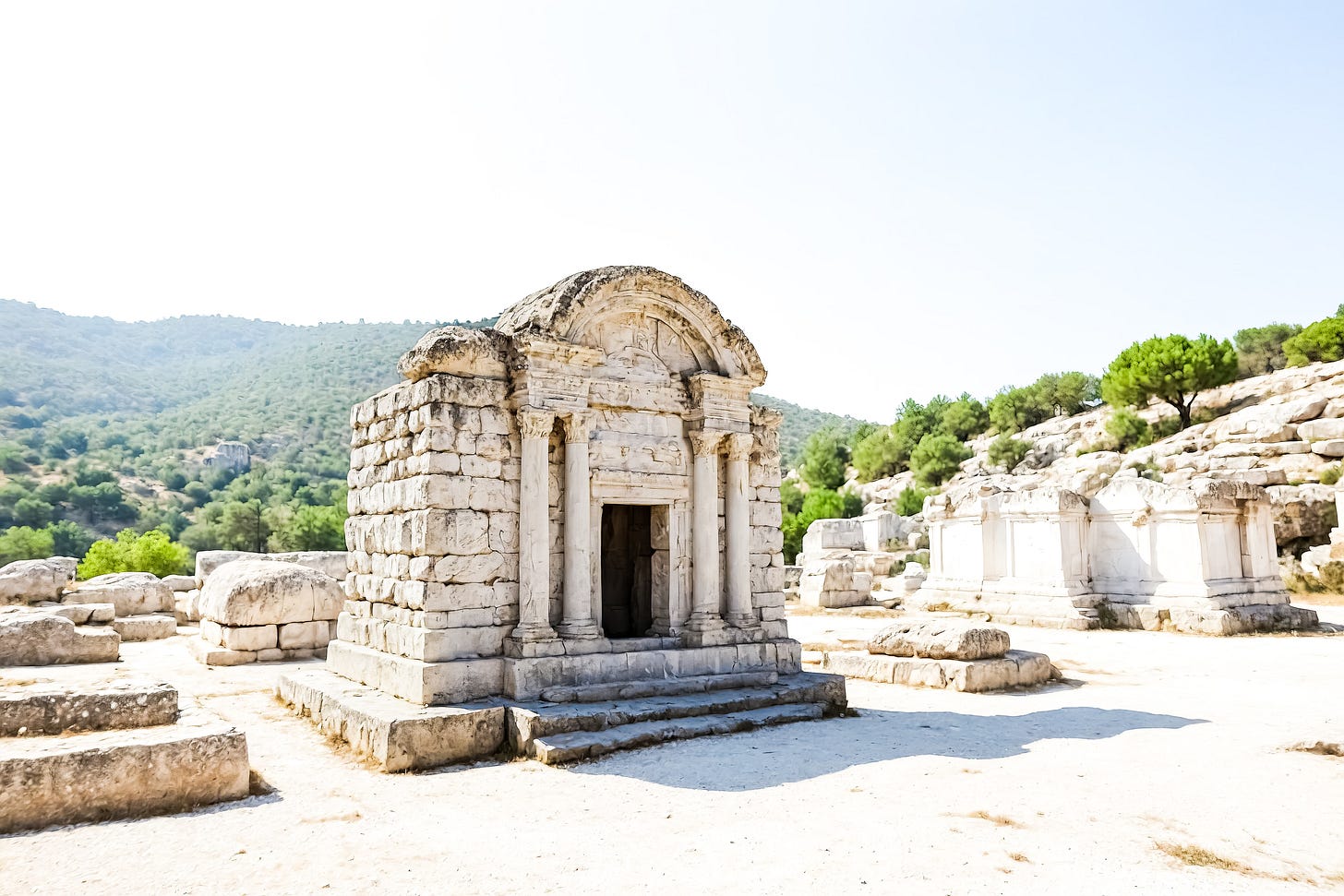The Least Broken Places
An ethnic tribe and a digital nomad radically reinterpret the spaces we inhabit.
PART I: Defining Spaces
‘I see life as a passageway, with no fixed beginning or destination. We tend to focus on the destination all the time and forget about the in-between spaces.’
—Do Ho Suh, Passage/s exhibition, Victoria Miro Gallery, London.
We experience life through a series of spaces: physical and metaphysical, architectonic and semantic. All four are deeply interdependent, forming the foundational pillars on which our existence as embodied, empiricist beings depends. But the last of these, language, is perhaps most vital of all.
Consider the Sámi, Europe’s only indigenous community, whose linguistic lineage stretches back some four thousand years. Their enclaves may be found on the Kola Peninsula in Russia, the northernmost tip of Finland, parts of Sweden as far south as Idre, and the adjacent area of Norway’s rocky coast, resulting in nine distinct language variants that are remarkable not only for their diversity but their beauty, their exactitude in describing the more sublime and ethereal aspects of the unspoilt landscapes they inhabit. For the Sámi, light, airy, dusty snow is habllek, while snow that sticks together and is difficult to dig is tjaevi. A reindeer that has fled the herd is ruvggáladat, whereas čearpmat-eadni describes ‘a cow that has lost its calf of the same year but is accompanied by the previous year’s calf.’1
The Sámi make plain the power of language to precisely define our sensory and cognitive perceptions of the spaces we ourselves inhabit. Yet language, inextricably twinned to the ineffable, the transcendent, the tenuous and incipient, possesses a quality of treachery not found within the other spatial pillars: a tendency to skew reality so that it can replace it with a word, an appellation that may inhibit us from apprehending what the named thing truly is. As Susan Songtag notes in Against Interpretation, the intellectual transliteration endemic to the use of lexicon ‘impoverishes’ and ‘violates’, substituting abstract meanings for direct sensory engagement. Language is the most potent tool we have for making sense of the world, the ultimate umbrella space in which all others are nested. But its simultaneous plasticity and intractability—the paradoxical, quantum state of being both infinitely open to hermeneutics and calcified by cultural context—renders it capricious and duplicitous, leading us away from truth even as it insists its substitutions are infallible.
And so to the spaces we make for ourselves—those arrangements of steel and stone, marble and glass, that replace the canopy of the sky in which Sámi snow swirls, the mosaic of the earth on which Lapland reindeer run, with Babylonian constructs at the scale, not of human form, but human ambition.
Colin Davies, writing in A New History of Modern Architecture, struggles to articulate the nature of such constructs. ‘The meaning of the word “space” is slippery’ he tells us. And so it is: Architectural forms give rise to formless expanses, nebulous voids that defy easy classification. This difficulty in definition is cross-cultural; even the Sámi flounder here, vacillating between the prosaic gáirri, referring to a physical location, and áigi, denoting the vast expanses of the cosmos.
Shifting continents in search of better spatial definitions, wiser words, from West to East, Europe to Asia, seems only to erode clarity still further, to make meaning more opaque. As Davies points out, somewhat deflated, ‘in Japanese translation it becomes even harder to pin down.’ He suggests ma as a possible descriptor, before conceding the term is closer in meaning to a gap, a pause, an interval ‘rather than a geometrically defined entity.’
Davies does not labour alone: the task of taxonomy is as widespread as it is old. Yet irrespective of its arbiters, be they critic or country, so many of our linguistic classifications are merely a matter of perspective—and sometimes ideology. Surveying the rocky garland of the Senkaku Islands, formally recognised in 1895 as Japanese sovereign territory, the Chinese view of this uninhabited islet chain is one of avaricious appropriation that renames it Diaoyu Islands, ostensibly a strategic staging area for offshore fisherman in 1400, conveniently predating Japan’s claim by an obdurate 500 years.
It comes as no surprise, therefore, that the two nations cannot seem to agree on the nature of the voids that all structures—be they geological of architectural—describe, the inevitable, inceptive apertures that bound, for better or worse, human potential, human existence. What for the Japanese is ma, is Feng shui to the Chinese: an insistent, elemental geomancy of water and wind. Its exponents are zealous arbiters of the spaces created by buildings, what Patrick Nutgens calls, ‘the eternal theme of architecture’. In The Story of Architecture, he relates how they are, and always were, obsessive ‘about the use of space, and about creating spaces; space was all important in Chinese philosophy’. So important, in fact, that they placed it above the edifices that gave rise to it. Chinese buildings are thus in some sense incidental to the spaces they define.

Part II: Glittering Gaps
‘Space is the breath of art. Whatever the proportions of a building, they may be spoiled if the spaces do not sing.’
—Frank Lloyd Wright, The Art and Craft of the Machine.
From the ancient, arcane magic of Eastern philosophy to the modern, more rigorous interrogation of Western theorists, this notion of the primacy of space over place persists. The architecture critic Rowan Moore reinforces this tiered distinction—between construct and cavity, object and interior—in Why We Build. ‘Buildings are most obviously objects,’ he states, ‘yet the purpose of the object is largely to make or modify spaces. It makes rooms inside and on the outside, joins with other buildings to make a street.’ Seen in this light, and returning to the Japanese interpretation of ma, the crucial interval, our modern metropolises of steel and gleaming glass are little more than ‘a huddle of objects with gaps between them.’
But what buoyant baubles, what glittering gaps! It is in these interstitial vertices that the true alchemy of architecture takes place, manifesting from a confluence of what is seen and what is implied, structure and conjecture that is contextual and personal, conditional and relational. As Moore makes clear, ‘Architecture does not act alone, but in combination with whatever is around it—other buildings, climate, landscape, culture, politics.’ And then he doubles down, circling back to his original thesis. ‘Architecture is is not the design of buildings, but of spaces inside and out, which might be formed and changed, more or less gently or drastically, by the construction or adaptation of a building.’
All this is true: Architecture is defined, not by its forms, but by the spaces constructed by those forms. Irrespective of the patron’s brief or the architect’s idiosyncratic vision, a building’s true function is to serve as a space for human flourishing. Not everyone agrees, of course. In The Tall Office Building Artistically Considered, Louis Sullivan, pioneer of the contemporary skyscraper, mistakenly cleaves to a rather calcified and outmoded idea of what a building can be, should be. ‘Form ever follows function,’ he proclaims, ‘and this is the law. Where function does not change, form does not change.’
Except when it does, when it must. The form that follows function is one that embraces, not structure, but void; not exterior, but interior, not what is made, but what is left unmade, pregnant potential as yet undelivered, in a perpetual state of architectural gestation. Like a papier-mâché lantern, a plaster mould, a blown-glass vase, or a hammered metal bowl, a beautiful building—where ‘beauty’ is measured not by aesthetic appeal but functional utility—is crafted from the inside out.
Moore is highly cognisant of this new law, superceding and supplanting Sullivan’s 1896 edict. ‘Space allows freedoms and qualifies them,’ he states. ‘It makes certain actions more possible. It changes with time.’ But it also comes with certain inherent challenges around the circumscription of those freedoms, the polarisation of functional affordances, and the dangers of unfettered democratisation. Specifically, architectural space ‘can be intimidating or intimate, open or enclosed, unrestricted or rule-bound.’ And crucially, ‘It can be profoundly altered by barely perceptible adjustments.’
According to Moore, the size and scale of a building, the materials used in its construction, the light it lets in (or shuts out) and the skin in which it is clad (or, in the scarcity of ornament, laid bare), ‘give a space a climate which prompts associations, harbours memories, and provokes images.’ We occupy these infinitely malleable, temporally-dependent climates not only physically, but mentally—the experience is implicitly multi-sensorial, multi-dimensional, multi-valent. As Moore puts it, the power of such a space ‘lies in its multiple nature, that it is experienced through both body and imagination. Space is something for the imagination to inhabit.’
But whose imagination? Not everyone’s. Memory, imagery, and association will be available to some, but not all—an unavoidable corollary of designing a building truly fit for purpose, carefully calibrated to maximise human well-being within a given remit. Moore recognises the unique and confounding challenges presented by this need, admitting that ‘a space cannot be equally available to all possible uses and people; it will always belong to some more than others, mean more and have greater purpose.’ There must always exist some othering, some exclusion, some siloing of those who cannot be served by a given architectural space. Buildings demand a point of view, a perspective that defines the spaces they describe. Moore outlines the consequences of neglecting this foundational necessity. ‘The absolutely blank or neutral place,’ he writes, ‘that might in theory be infinitely flexible and available, is as inhuman as one that is over-prescribed.’
Absent all authorship, a building and the spaces it creates, the climates it conjures, inevitably find their atmospheres of unrealised potential thinned to a liminality in which substantive transformation and self-actualisation cannot manifest at all, reduced to the anodyne ‘non-places’ of French anthropologist Marc Augé’s 1992 manifesto of the same name. Such spaces disregard the identities of those who inhabit them, deeming their needs temporary, transitional, transactional, and thus determining that they cannot change state, only locale. We are surrounded by, subsumed into, these non-places. The airport, the train station; the hotel, the dorm. They are inescapable as they are unremarkable. As online commentator Cresendex tells us in the video essay The Art of the In-Between, ‘Non-places aren’t designed to remember you... and you aren’t really designed to remember them.’2
At the other end of the spectrum is the ideological building, the iconoclastic complex, the modern monument to architectural hubris that brooks no argument against its pre-ordained, pre-determined usage, no matter the era it finds itself in. Moore reminds us that the spaces produced by auteur architecture may prove empowering—or deeply disenfranchising, depending on how they are wielded by the architect-artisan. ‘Buildings that rely exclusively on visible form,’ he warns, ‘or have a completeness of detail that permits no further change, or deny the sensual, or prescribe future uses too precisely, or proclaim a single form of propaganda or branding or ignore their surroundings, or scale, are likely to oppress.’
The remit of the modern architect, Moore argues, is to elegantly arbitrate between these two oppositional impulses: stultifying homogeneity versus petrifying prescription, in order to arrive at a halcyon equilibrium of that which is open, embracive, serendipitous, and that which is definitive, bounded, affirming.
Part III: Yes is More
‘As an architect you design for the present, with an awareness of the past, for a future which is essentially unknown.’
—Norman Foster, Digital Life Design Conference, Munich.
An ancient Greek myth recounts the tale of Alexander the Great and the Gordian knot. This recalcitrant ligature tied an oxcart to a post in the royal palace of Phrygia and, with it, the fate of all of Asia; to untie it would be to claim the entire continent as ruler. As the story goes, in 333 BCE, while visiting Gordium, Alexander was challenged to untie the knot. It was, by all accounts, a puzzle sans solution: Roman historian Quintus Curtius Rufus describes the infuriating contortion of cornel bark as ‘several knots all so tightly entangled that it was impossible to see how they were fastened’.
But Alexander did not try to unfasten it. Instead, he used his sword to cut straight through, demonstrating his considerable insight, strength, and decisiveness. He later went on to conquer Asia from the Oxus to the Indus, fulfilling an ancient prophecy and, in the process, instantiating one of the largest empires in human history as one of its most successful military commanders.
Arbitrating the nature of spaces is a kind of Gordian knot, as is defining them, describing them beyond their function, beyond their form, beyond the time in which they are erected, beyond the vision of their architects. As we have seen, the Japanese deem space ma, the Chinese, Feng shui, opposing arguments of another ancient Asian epic, entwined and intractable, impossible to tease apart, each end insisting that the other be removed, dismembered, implying that both must be destroyed if the answer is ever to be liberated from this twisted umbilicus, demanding brute force that severs the possible into the binary, a zero-sum game which neither side can win.
Except for that fact that, in some retellings of the legend, Alexander did not cut the knot. Instead, he pulled the lynchpin from the pole the yoke was fastened to, exposing both ends of the cornel cord and thereby allowing him to untie the knot without even needing to unsheathe his sword.
Perhaps this is the solution. Perhaps spaces are best described by their illimitable malleability, their metaphysical multiplicity; not any one thing, but potentially everything. Not merely ma, the pause and pregnant interval in which we become something more than the aggregated atoms that comprise our physical forms, not simply Feng shui, where we orient ourselves in the direction of harmony, peace, prosperity, and tranquility, but something even more magnificent, singular and unbroken. Spaces are not a simple binary, but rather an infinitely expanding continuum. Not either/or, but rather yes/and.
The Danish architect Bjarke Ingels is a provocative example of precisely this approach. His work embraces paradox and contradiction, with design philosophies such as Utopian Pragmatism striving to ‘incorporate and integrate differences, not through compromise or by choosing sides, but by tying conflicting interests into a Gordian knot of new ideas.’3 Ingel’s spirited rejection of reductive simplification and anemic uniformity, emboldened by the mantra, ‘Yes Is More’, is exemplified by projects such as CopenHill—an artificial mountain wrapped around an energy plant. The resort is a grand gesture of what Ingels terms ‘hedonistic sustainability’, with ski-slopes and hiking trails atop the manmade massif complemented by an indoor climbing facility and cosy boho cafés.4
This radical reframing, this new expansive view, leads us to the startling realisation that spaces are ultimately best defined by their antonyms: not what they are, but what they are not. Not the non-places of Marc Augé’s Introduction to an Anthropology of Supermodernity, the liminal zones in which all human action is ephemeral and empty, invalidated by its temporary, transitional, transactional nature, but instead its existential, anthropological antithesis, the kind of place we can thrive in, the only kind that matters.
As it turns out, the Sámi have a word for precisely this sort of space.
The word is báiki.
It means home.
PART IV: The Home That Lives in the Heart
‘The house shelters day-dreaming, the house protects the dreamer, the house allows one to dream in peace.’
—Gaston Bachelard, The Poetics of Space.
Home. Crucially, ‘the home that lives in the heart’, one that emphasises a sense of cultural identity and belonging, rather than any specific locus of human habitation. Báiki are homes that dwell within us, that inhabit us. They are the sensory, somatic, asemantic spaces we convey inside our minds, en masse, accumulated over a lifetime as we move through physical space.
‘Home is not given, it must be made,’ states the mononymous video essayist Baegogi.5 It is the epistemological, epiphenomenal accretion of human choices, human will, human freedom, human flourishing, what Baegogi refers to as ‘an emergent property’ or our agency in the world, stretching back aeons, to our earliest physical embodiment as the chimpanzee-like Sahelanthropus, six million years ago (and cascading forwards into the virtual worlds in which humans now venture as digital, disembodied avatars). The crude shelters of our primordial ancestors, primitive responses to the existential tier of Maslow’s Hierarchy of Needs, evolved alongside them. As Baegogi puts it, ‘Wooden walls replace dirt. Glass panes create windows. Doors provide security while maintaining access. Each upgrade reflects not just increased capabilities but growing emotional investment.’
That emotional investment propagates, pollinates, persists, from the individual to the collective, from pre-history to modernity, from what Baegogi terms ‘the desperate need for first shelter’ to an ‘attachment that transcends practical concerns’. The process is subtle, gradual, as much interior as exterior; each new edifice, be it humble or hubristic, civic or self-serving, erecting new structures in the mind, fresh spaces in the soul, all of them potential loci for what Historian-philosopher Michel Foucault termed an episteme—the invisible, unconscious framework that shapes what we believe and desire within a given age. For Baegogi, spaces derive their emotional significance as epistemic homesteads not through ‘narrative declaration or mechanical requirement’ but rather as a natural consequence of our agency within them. Where they are and what they are is in some sense irrelevant, for ‘wherever we find comfort, community, and a place to return to, we have found home.’
As it is for the Sámi, home for Baegogi has always been more than mere geography. ‘Home isn't primarily about location,’ he tells us, ‘but about relationship, how we interact with a space and what it comes to represent: not just shelter or safety but a place that reflects our journey, holds our history, and provides context for who we are and who we're becoming.’ His digital, incorporeal iteration of the Sámi báiki is ‘a foundation that provides both the security to venture out and the comfort of knowing there's always something to return to.’ It is the space one revisits upon metaphorical death, when ambitions are unrealised, love is unrequited, and hope is all but lost, ‘a mechanical manifestation of emotional refuge.’ Ultimately, we come to cherish it for what it is, ‘not as a perfect sanctuary, but simply as the least broken place one can put their head to rest.’
All buildings have the potential to be báiki, to be home; to be ma, to be Feng shui, but some are self-evidently more promising, more likely to succeed. Libraries, cathedrals, colleges, and museums are thus possessed of a singular civic responsibility in this regard: To be the parent we did not know or lost too soon; to be the sibling we share our secrets with; the partner who loves us; the mentor who challenges us to be better than our innate frailty.
Every object in the universe is subject to the same materio-temporal forces of decay and dissolution we are: ‘You can’t leave it behind’ seems an apt corollary to the old adage, ‘you can’t take it with you.’ But the buildings we make, and the spaces they create, come surprisingly close to defying the rule, at least within our limited lifespans. Architecture endures. It can withstand the attrition of time. Not forever, but long enough to mould human culture, shape human civilisation. Long enough to be the sacred space we venture out from and return to, generation after generation. Long enough to be our báiki.
Rowan Moore knows just what is needed in this delicate dance of arbitration-cum-construction. ‘Spaces that permit accident, are open to whatever is around them, and understand their role as background, or instruments, are more likely to create freedoms,’ he writes. It is these freedoms we must prize, must protect, zealously defending them against incursions of architectural folly and fascism, the idiocy of intellectual posturing writ large in concrete monoliths.
For it is in spaces of freedom that we finally find our place.
Our báiki.
Our home.
Essay excerpted from ‘Deconstructing Architecture'’, by Drew Douglas, available next Spring from Sonder Street Press, an imprint of Portal Publishing.
The Languages Lost To Climate Change, Julia Webster Ayuso, Noema.
The Art of The In-Between: An Analysis of Liminal Spaces, Cresendex, YouTube.
Yes Is More: The BIG Philosophy, Anders Møller, ArchDaily.
Hedonistic Sustainability, Bjarke Ingels, TEDxEastSalon.
Finding ‘Home’ In Digital Worlds, Baegogi, YouTube.











